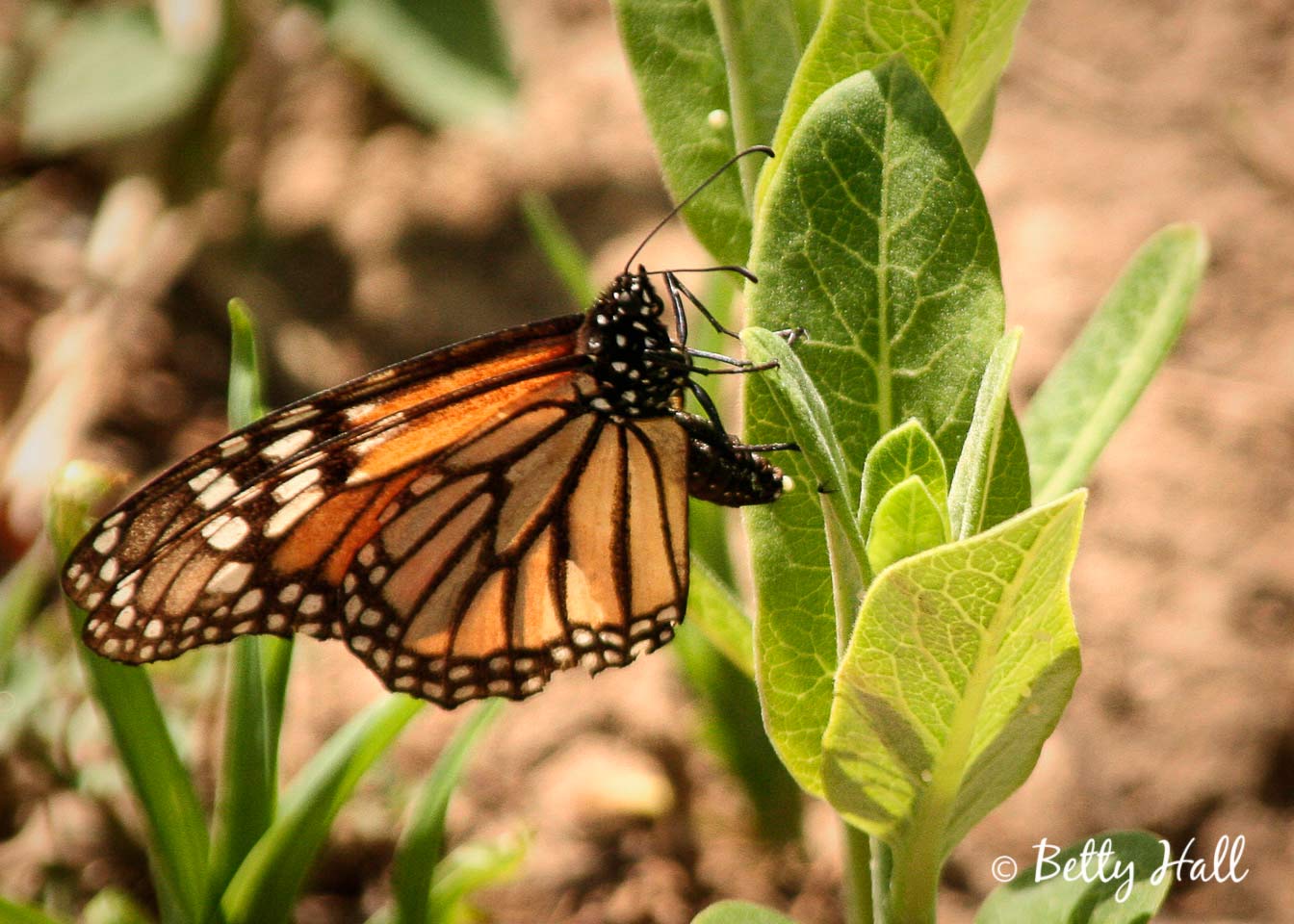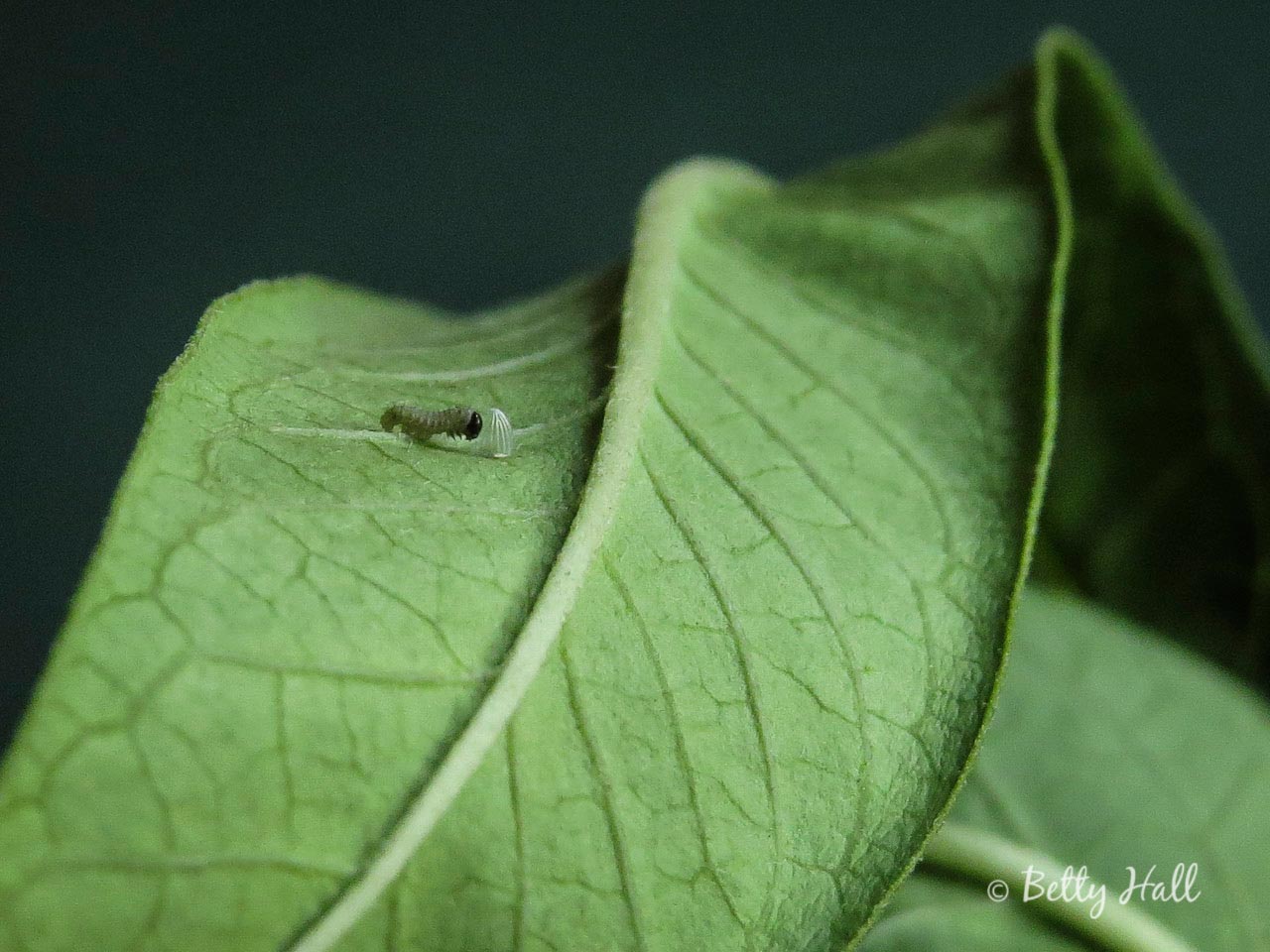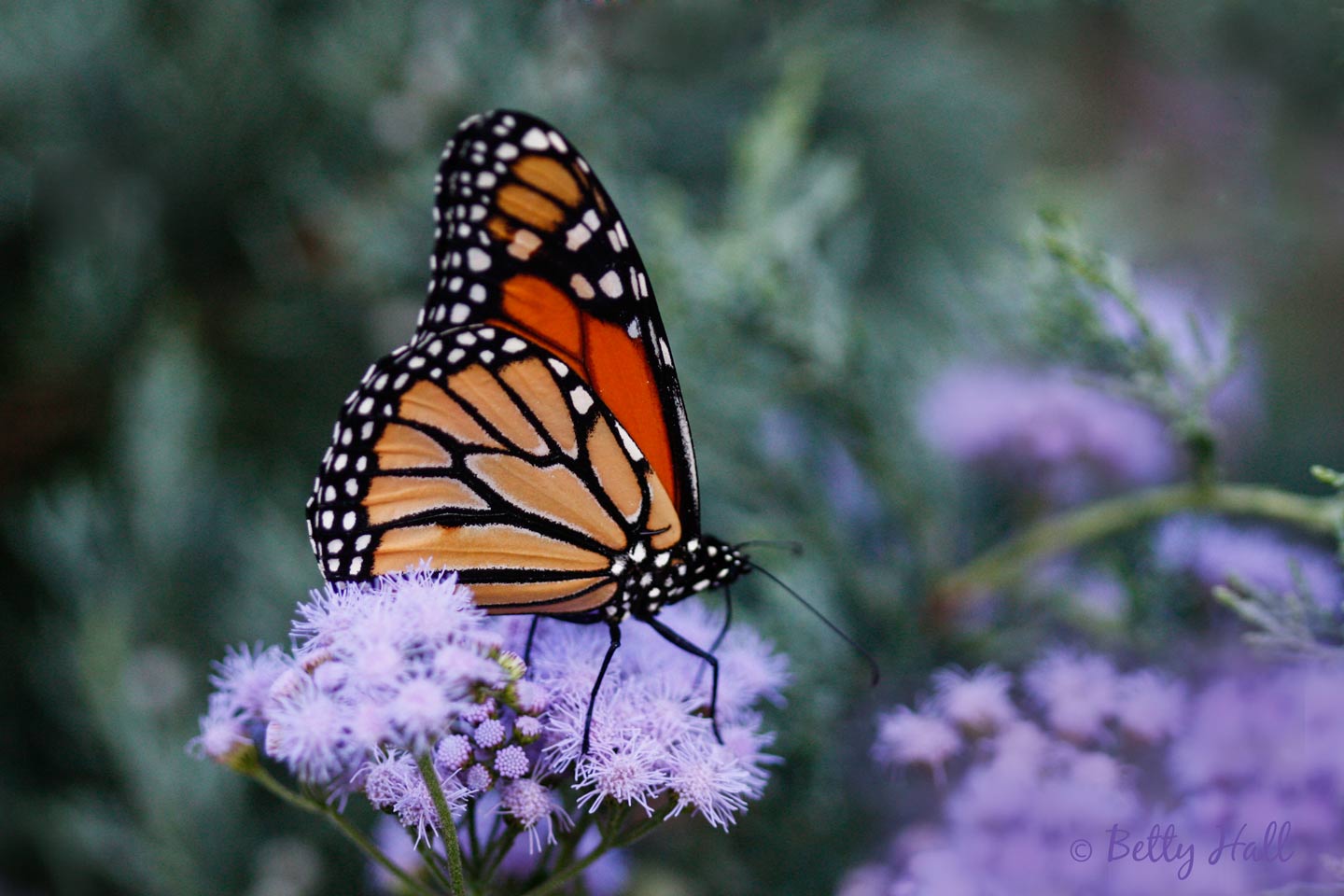We’ve been seeing Monarchs quite frequently in the backyard, and have often seen 2-4 at the same time. According to a recent survey by the Lexington Chapter of Wild Ones, others in this area are also seeing them.
In addition to adult butterflies, 13 of the 50 survey respondents have also found eggs and caterpillars on their milkweed plants. Butterfly eggs are quite small and are usually on the underside of leaves. The easiest way to find them is to see a butterfly laying an egg as I did in the spring of 2006. Note the tiny egg on the tip of the monarch’s abdomen as well as the egg on a leaf in the background.
It’s also challenging to find caterpillars. They start out very, very tiny. This one had just emerged from its egg shell and is eating the shell – probably for nutrition and possibly to hide evidence of its presence.
Caterpillars are very good at hiding, especially during the day. And, both eggs and caterpillars often mysteriously disappear. Butterfly eggs are tasty morsels for a number of insects. Monarch caterpillars are poisonous to birds or any animals with a backbone, but not to spiders, wasps and other insects.
A female Monarch often lays 100 or more eggs – only on milkweeds. However on average, only one will survive to become a butterfly. Thanks goodness some of them do, like this one on Mistflower (Eupatorium coelestinum).
I hope you are seeing some adult Monarchs. If you are a real detective, you might even find some eggs or caterpillars. As usual, I’m interested to hear what you see.





Beautiful.
Once again, stunning photos Betty, especially the one of the Monarch on the Mistflower. And thank you so much for the information about their life cycle, so amazing! No Monarch butterflies in Jersey, so i look forward to viewing the lovely photos you send us on your blog.
Great “egg laying” photo Betty. Here in Virginia a Beach, I have raised and released approx 115 Monarchs. 79 of those were released at one time…it was glorious! I may have another 150 eggs, caterpillars and chrysalis……..a lot of work but the release is worth it all. Also a note of interest….our butterfly expert at the Norfolk Botanical Garden advises that a female Monarch may lay as many as 400 eggs!
Always look forward to your posts to see what you have next.
Christine, what a photo opportunity the release of 79 monarchs would have been! And the number of monarchs you are raising is quite impressive. Yes, I can well imagine it is a lot of work. Thanks for sharing that female monarchs may lay as many as 400 eggs. And good luck with all those caterpillars.
Two monarchs were flying in my driveway and one almost landed on me. I did not have my camera so I missed getting a beautiful picture like yours.
Patty, I’m sorry you didn’t get the photo, but glad to got to see them up close. Hope you’ll get another chance.
We have raised 100s of Monarchs so far with many still eating. It has been one of our better years for them. Love to see your photography.. Northern Ky
Wow! That’s great. So glad to hear and thanks for sharing.
A tiny treasure in the hand of a child, colorful zinnias bordering home, a gallery of butterflies – all so very beautiful. Thank for hearing your
commission and responding. Thank you for following your calling to record
and share the beauty of our world.
Thank you, Beth. I’m indeed grateful that there is so much beauty to be shared!
today a friend posted on Facebook a picture of a caterpillar (which i’m certain was a monarch).. on a leaf that i’m sure was not milkweed…there were lots of orange spotted bugs on the stem and she commented that it was eating these bugs?????
Patty, I’ve never heard of caterpillars eating anything except foliage, and according to all I’ve read, monarch caterpillars will only eat milkweed.